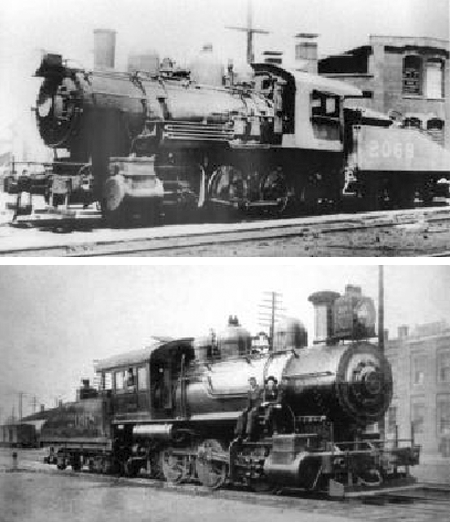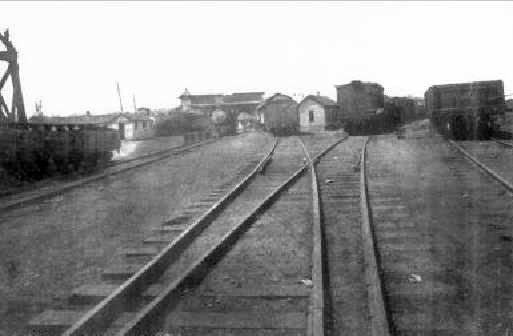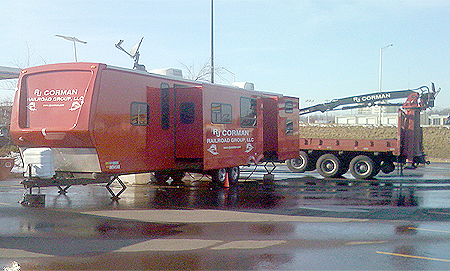



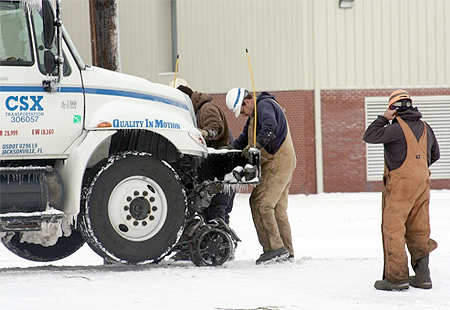
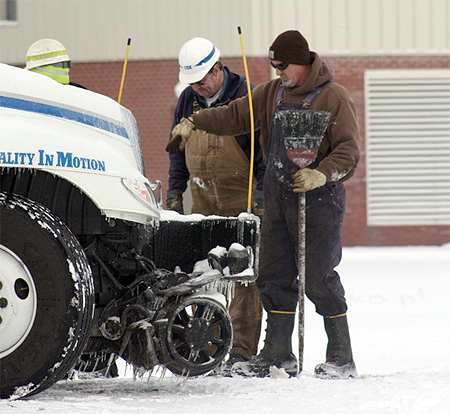

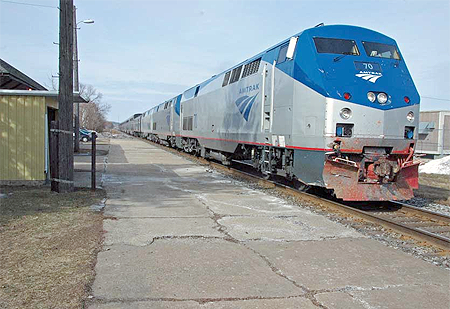
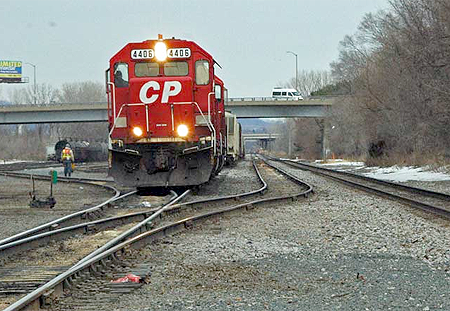
March of 1986 was a moment of great expectation for me. Madisonville KY at that time had a Honda Motorcycle store on East Center St. For several months I had been going to Madisonville Honda to make payments on my new, not yet ridden motorcycle, a Honda VF 500F Interceptor. I opted for the smaller 500cc motorcycle as opposed to the much larger (read that as faster) VF 1100 F. I new I would come closer to killing myself on the “big” bike than I would on a smaller one. This really does not make any sense…a crash at 80 mph is deadly regardless the size motorcycle. However, my reasoning was sound: the 1100cc bike would “do” 180mph off the show room floor, faster if one pulls the leads from the rpm limiter. As for the 500cc bike, well only 135mph!!!
It was 27 degrees when I pick up the bike and rode it home…cold. The salesman said if I change the oil every 1000 miles and leave the rpm limiter hooked up, it would last forever. I did, some weeks during the summers I changed the oil twice, I rode it that much.
The little bike was quick, nimble and a blast to ride. I was often times riding in and out of the dashed lines of a two way road…at 80 mph, any faster and I could not cut each line. And of course the back wheel was on the ground a lot more than the front. Soon I tired of “just tooling” around town and began to make a few long trips. One was on hwy 62 from Nortonville to Louisville KY. I made it as far east as Leitchfield KY when I came upon a derailed IC/P&L train at the viaduct just east of town. I stopped to photograph and soon realized it was late. I needed to get home. It was about dark when I hit the West Kentucky Parkway westbound. For once I was not prepared. I always had a few tools, camera and a jacket in my tank bag. That day I left the jacket behind for some reason. Needless to say after the sun went down it was cool, very cool and I do not like to be cold. Well my theory was: the sooner I get home the sooner I will be warm again. From the Leitchfield exit to the Dawson Springs exit…27 minutes.
I have many stories such as that trip to tell but the one to tell is the great Nebraska trip.
In 1989 I was still working for Cimarron Coal Company in their parts department as a parts chaser. A great job it was. I had a new Ford one ton truck every two years and I drove around town picking up parts for the coal company. My hours were 4:00 AM to 12:00 noon on day shift, 12:00 noon to 8:00 PM on nights. I rotated shifts every two weeks. Now those are some great hours. The best part was ever other two weeks I worked off at noon on Friday, and returned at noon on Monday.
It was on one of these long weekends in 1989 that I decided to go to Nebraska and see my buddy Kelly Martin. I have written about Kelly before, we met on a Frisco 1522 trip in 1988. He lived in Kearny NE and I visited him several times. Well I set out for Nebraska with Kearney as my destination. After one rides long enough his butt becomes numb as does his brain! At Kearney I find Kelly is not home and I wasn’t about to just “sit”. I headed west on U.S. 30. Hwy 30 across Nebraska is the railroader’s dream as most of the highway parallels the Union Pacific Mainline from Columbus NE to Cheyenne Wyoming. After leaving Kearney I began to build an idea in my head. (Danger signs for sure). I calculated how much time I had before I had to be at work, how far I had ridden, and at what time I would have to turn around. With this formula in my head I decided I could make it to Cheyenne. Well best made plans be as they are I forgot to include the intake of fuel, food and the obligatory calls of nature. Thirty minutes before my turn around time I was in Chappell Nebraska 126 miles east of my goal of Cheyenne, at a road side picnic table watching UP trains go by. At the magic thirty minute mark I turned east to retrace my steps. More times and figures in my head. If I ride fast enough on U.S. 30 which again is a two lane road, I will get home and stay off the I-80 four lane. The goal of all this, I will see more trains. If I get behind I can jump over on to the parallel I-80 and “go”.
Then it happened, possibly the dumbest idea to date, (very little sleep and a very tired butt/brain did not help this). If I do this not only will I make up time, but I will be able to stay on U.S. 30 the whole way to Lincoln NE. Lincoln is where Highway 30 turns north east and I-80 continues due east to Omaha NE. At Lincoln I would have change roads and start my southerly trek to Kansas City. This idea was: to ride 100mph for 100 miles.
I did just that. I had to slow down for a few towns but as soon as I was on the “other side” I pulled the wick back on the bike and right to 100mph again. I honestly do not remember much else of that trip. I did stop at a DQ in Ogallala NE for a bite to eat. I remember watching for the Cozad NE. passenger station and the big grain elevator with COZAD spelled out across the bins, but little else. I did make it to work and I proved to my coworkers once again: when I get on a motorcycle, I get a bad case of “Super Stupid”. Unlike a few friends and acquaintances, I managed to see a lot of what I wanted to see, trains AND stay alive.
I hope that all of you have been able to recover from the once in a lifetime ice storm that we had. It was trying but it was a great example of everyone pulling together. We had a very nice meeting in January and the weather cooperated by holding off long enough for us to have a complete meeting and get home before the snow came in. I checked the weather outside several times during the meeting and was happy to report no activity.
I came across an interesting article in Trains Magazine the other day in the Feb. 2009 issue about this group of railfans in the United Kingdom that built a brand new 4-6-2 Pacific type steam locomotive. It was the first new mainline steam engine built there since 1960 and the first ever to be built without a fully staffed and equipped locomotive works. They started saving money and getting donations in 1990 and the engine was completed and tested to 75 mph in Nov. 2008. It will go into excursion service this spring. The group had 2000 individuals donating and they started out by asking for the amount of a pint of ale each week to have a steady income. They say that this engine is not a replica but actually the 50th engine in the line and has the next number in line after the last one was built a half century ago. It is equipped with more water capacity and incorporates many improvements in metallurgy, safety, and electronics. This is a truly beautiful locomotive with a certain grace and class that British engines seemed to exude. These folks are to be applauded for there hard work and perseverance. If you would like more information or to donate to their cause check out their website at www.A1STEAM.com.
I am hoping to see all of your smiling faces at the next meeting at 7pm on February 23, 2009 at the Center in beautiful downtown Madisonville.
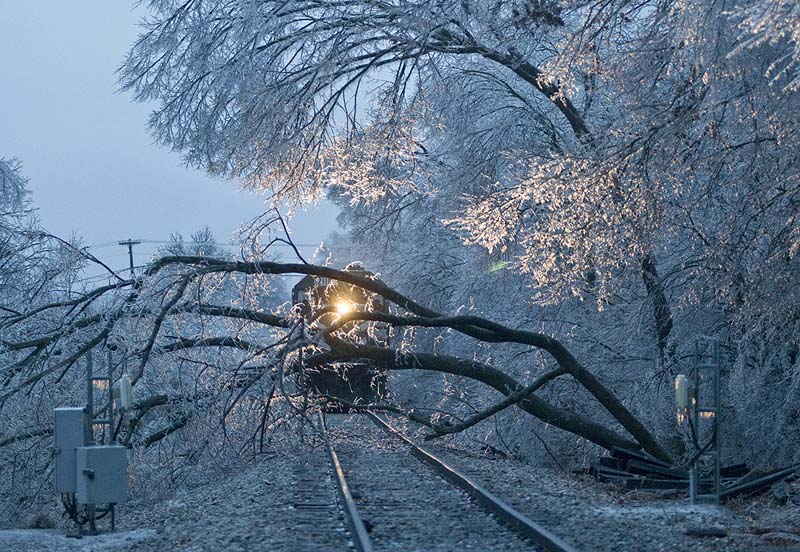

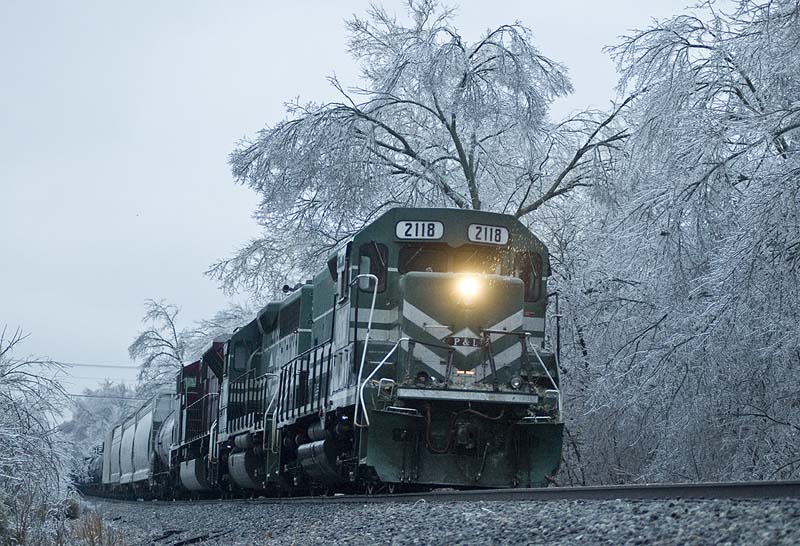
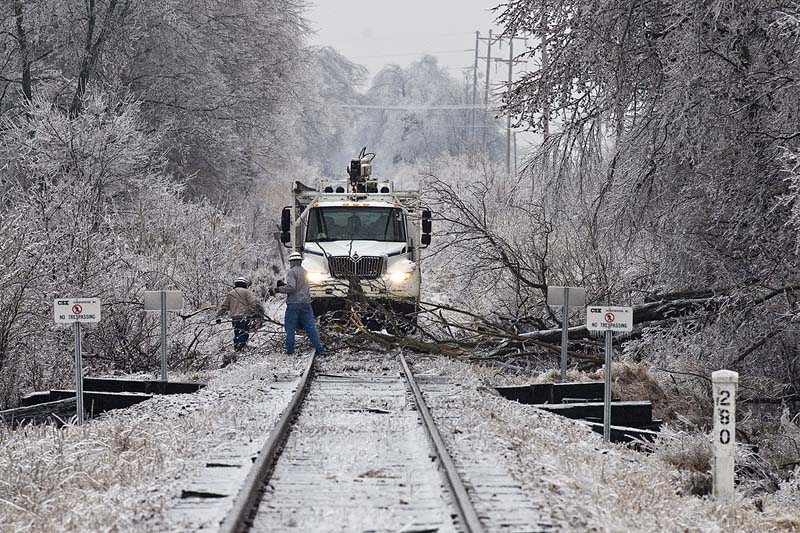
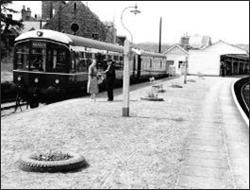
A few years ago, my cousin Martha Dees (known to the family as Marty) researched the family tree back some 14 generations to our 12th great-grandfather who left the ancestral home in Scotland to come to the new world. The region just southwest of Aberbeen, is known as Deeside and is along the River Dee – hence the basis for our last name. The area is rich in history, is the site of the Royal Bayoral Castle, and includes an interesting and very active historical railway group – the Royal Deeside Railway.
The story of the Royal Deeside Railway dates back to 1845, when the prospectus for the Deeside Railway was issued. This was to be a single-line railway from Aberdeen to the town of Banchory, following the north side of the Dee river throughout. The scheme was so well received that it was decided to extend the line from Banchory through Kincardine O’Neill to Aboyne, just over 29 miles from Aberdeen.
Authorized on 16 July 1846, the Deeside Railway was delayed by the construction of the Aberdeen Railway from Forfar, and the scheme was re-authorized on 28 May 1852, although the Aboyne extension was postponed to a later date. The Deeside Railway opened to traffic on 8th September 1853. Eventually the line was extended to Aboyne in 1857 and reached Ballater on 17 October 1866.
Amalgamated with the Great North of Scotland Railway by 1876, the Deeside Railway was one of the region’s most scenic railway lines and for many years was travelled by members of the Royal Family en route to Balmoral Castle. Indeed, Queen Victoria’s desire for privacy at Balmoral Castle was the reason why the Deeside Railway never continued as planned to Braemar at the top of the Dee Valley.
Although the Deeside Railway was one of the most scenic and picturesque lines in the Aberdeenshire area, the line was mentioned in the Beeching Report of 1963 as a loss-making railway, closing to passengers on 28th February 1966. Goods traffic to the Culter Paper Mills kept the line open for freight until 30 December 1966, when Class B1 Steam Locomotive No. 61180 became the last steam train to run on the Deeside Railway. Arnott Young Ltd. were given the task of dismantling the line and by 1972 the tracks of the Deeside Railway had been lifted.
From 1972 the route of the railway slowly began to be reclaimed by nature, although the former trackbed, station buildings and bridges remained clearly visible to the public. Over time portions of the route were converted for other uses, the trackbed between Holburn Street & Culter being surfaced as a popular cycle & walking route. Other changes were more dramatic, such as the removal of the Holburn Street Bridge in 1981, the demolition of the station site at Banchory for construction of housing, and the complete dismantling of the Blarnacrag (or Beltie) Viaduct between Torphins & Lumphanan. However the majority of the route is still easily visible some 40 years after the railway was closed.
The Royal Deeside Railway Preservation Society was formed in 1996 by local railway enthusiasts, initially concentrating its efforts at the Aberdeen end of the line, where part of the former Aberdeen Ferryhill Engine Shed was considered for use as a workshop & museum, along with heritage railway services on the section of former Deeside Railway trackbed adjacent to the shed site. Discussions on the acquisition of the shed site are continuing with Network Rail & Aberdeen City Council.
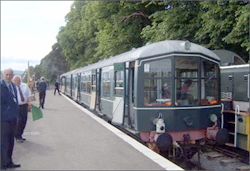
In August 2000 the society submitted plans to the local council for a reinstated railway operation between Banchory and Milton of Crathes, on the former Deeside Railway Line. Recent European Legislation required an “Environmental Impact Assessment” to be carried out, which was submitted in 2002. Approval for the majority of the scheme was received on 10th June 2003, work starting at the Milton end shortly thereafter.
The Society now has a number of items of rolling stock under restoration, including the unique “Battery Railcar” which ran on the line in the 1950s, and a historic collection of vintage Victorian coaches which are under restoration for use on the line. Regular summer execursions were started in 2008 and already the railway is beginning to come back to life.
Website address: http://www.deeside-railway.co.uk/index.php
By Rich Hane
I hope that everyone has survived the Holidays. We had a very nice time visiting the grandchildren and we were even able to get some rare mileage in that I am sure Wallace Henderson and Don Clayton do not have yet. Of course, they may not count urban light rail but the rails were 4 ft 8 ½ in. apart and standard gauge is standard gauge. We rode the Phoenix (Arizona) Metro Light Rail system about 3 days after it opened in late December. This system is about 20 miles long at this time and they hope to add to it in stages over time. The fare was $1.25 to anywhere within 2 hours and 1 detraining. One can get an all day rail/bus pass for just $2.50. The firm that my daughter works for (Sundt Construction, Inc.) constructed it so it was a thrill for her. It was quiet, smooth, and fast. The railcars are in pairs and receive power from an overhead catenary system using pantographs.
I am sorry that the Christmas Party did not work out but the weather just did not cooperate. Hopefully, we will have better luck this year.
Please remember to pay your dues to Wally Watts if you have not yet done so. This will make his job easier if he doesn’t have to remind you good folks.
I am looking forward to seeing all of your smiling faces at the next meeting at 7pm, Monday, January 26 at The Center in beautiful downtown Madisonville.
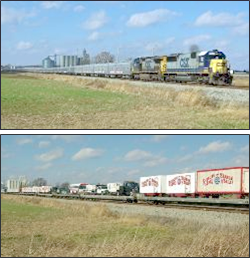
The Ringling Brothers Barnum & Bailey Circus train made a run down the Henderson Sub in November 2008 after a show in Evansville, IN. CSX P910-01 with 61 cars, Chicago to Orlando. Photos by Chuck Hinrichs.
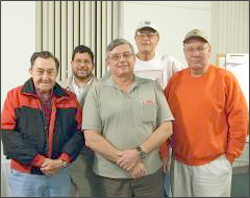
Your 2009 West Kentucky NRHS officers left to right: Secretary/Treasurer, Wally Watts, Member at Large, Bill Thomas, President, Rich Hane, National Director, Wallace Henderson, and Vice President, Chuck Hinrichs.
